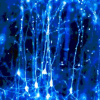 There could be at least three approaches to the long-term future of intelligence: engineering life into technology, simulated intelligence, and artificial intelligence. Further, while the story of evolutionary history is the domination of one form of intelligence, the future could hold ecosystems with multiple kinds of intelligence, particular specialized by purpose/task.
There could be at least three approaches to the long-term future of intelligence: engineering life into technology, simulated intelligence, and artificial intelligence. Further, while the story of evolutionary history is the domination of one form of intelligence, the future could hold ecosystems with multiple kinds of intelligence, particular specialized by purpose/task.
There are significant technical hurdles in executing simulated intelligence and artificial intelligence, but the areas have been progressing in Moore’s Law fashion. The engineering of life into technology will need to proceed expediently to keep pace with technological advance, and tie a lot of wetware loose ends together.
At present, the mutation rate of genetic replication puts an upward bound on how complex biological organisms can be. The human cannot be more than about 10x as complex as Drosophila (the fruit fly), for example. However, if the error rate in the genetic replication machinery could be improved, maybe it would be possible to have organisms 10x more complex than humans, and so on, and so on…
Sunday, October 17, 2010
Phase transition in intelligence
Posted by LaBlogga at 8:27 PM
Labels: artificial intelligence, complexity, future of intelligence, genetic replication, information optimization, intelligence, mutation rate, phase transition, simulated intelligence
blog comments powered by Disqus










 Email me
Email me Twitter
Twitter MS Futures Group
MS Futures Group Data Visualization Wiki
Data Visualization Wiki Economic Fallacies
Economic Fallacies
